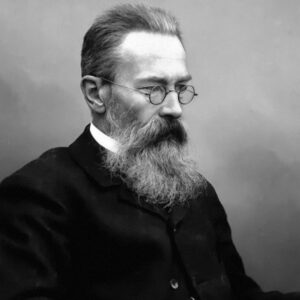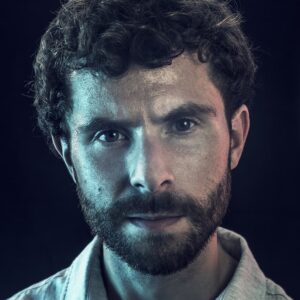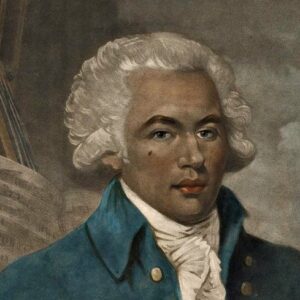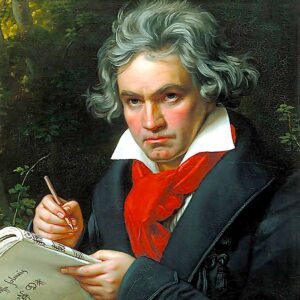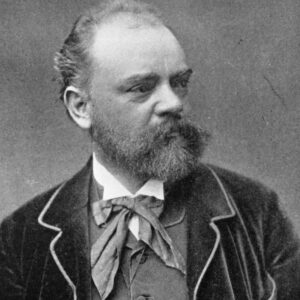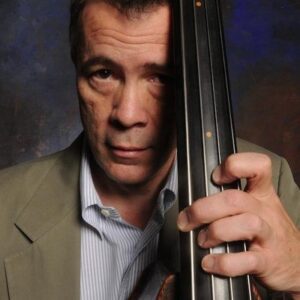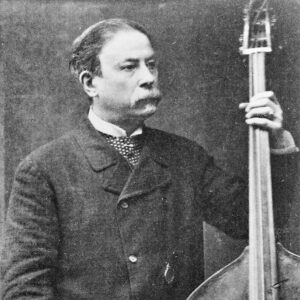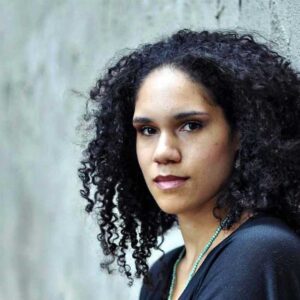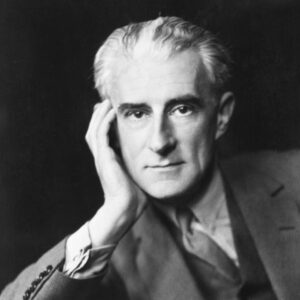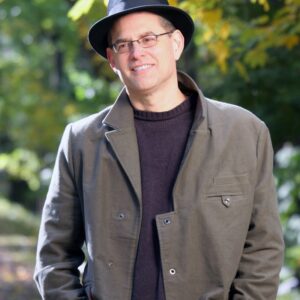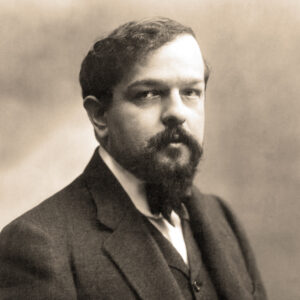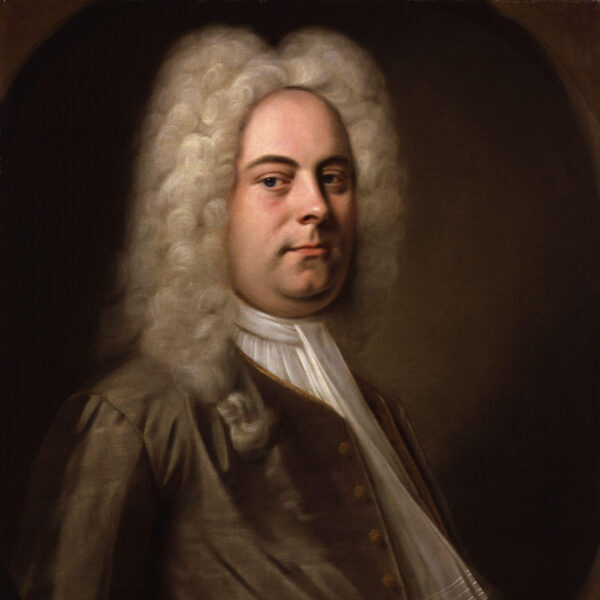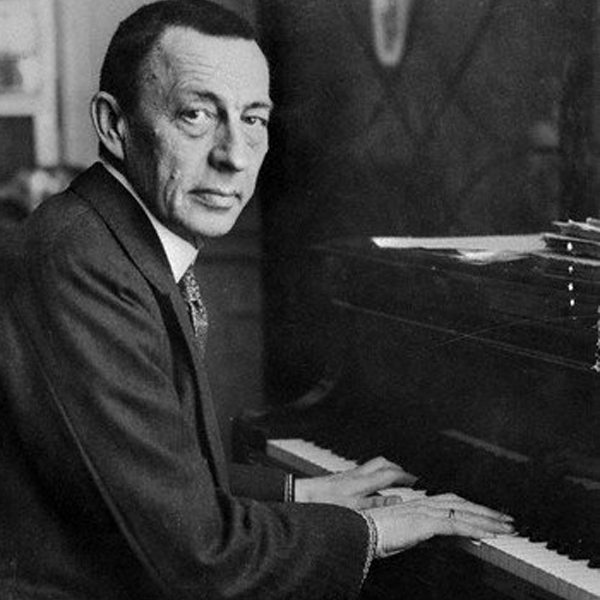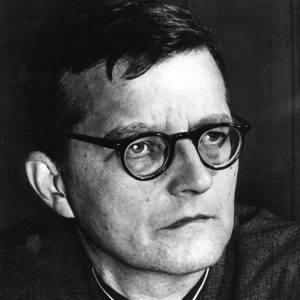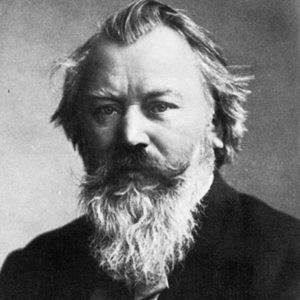Richard Wagner
Prelude to Die Meistersinger von Nürnberg, WWV 96
[Wilhelm] Richard Wagner was born in Leipzig, Germany on May 22, 1813 and died in Venice on February 13, 1883. He was the most important composer of German opera in the latter half of the nineteenth century. His crowning achievement was the Ring of the Nibelung, a four-opera epic that occupied him from the late 1840s until its premiere in the summer of 1876 in an opera house in Bayreuth built to his own specifications. His only comic opera, Die Meistersinger von Nürnberg (The Mastersingers of Nuremberg) was first performed at the Royal Court and National Theater in Munich on June 21, 1868, conducted by Hans von Bülow. The overture (or Vorspiel) is scored for piccolo, 2 flutes, 2 oboes, 2 clarinets, 2 bassoons, 4 horns, 3 trumpets, 3 trombones, tuba, timpani, triangle, cymbals, harp, and strings.
Wagner’s original conceptions for this, his only mature comic opera, stem from personal experiences in his private life as well as from his desire in 1845 to write a lighter counterpiece for the recently-completed Tannhäuser. His plan would produce two operas based on figures from German history—the courtly medieval Minnesingers and the fifteenth and sixteenth-century bourgeois guild of Mastersingers. In both operas, music itself stands as a representation of German culture. For various reasons, not the least of which was Wagner’s involvement in revolutionary politics in Saxony leading to his flight from Dresden and his subsequent exile, Wagner did not complete Die Meistersinger until 1867. Its first performance took place in Munich in 1868, by which time the mad King of Bavaria, Ludwig II, had brought the composer to his court, showering him with lavish financial support to enable the composer to bring his operatic projects, above all the Ring of the Nibelung, to fruition. Wagner’s work on the Ring was incomplete in 1864, the year in which Wagner was rescued from exile and relieved of his debts by King Ludwig. A decade earler, Wagner became completely absorbed in the writings of Arthur Schopenhauer, a pessimistic writer whose philosophical point of view was most clearly expressed in his magisterial four-part treatise, The World as Will and Representation (Die Welt als Wille und Vostellung). Many aspects of Schopenhauer’s influence are found in what many consider to be Wagner’s crowning achievement in musical tragedy, Tristan und Isolde, but also find their way into Die Meistersinger, especially in Hans Sachs’s famous “Madness” (Wahn) monologue in Act III.
None of this, however, may be heard in the Prelude to Die Meistersinger—a grand and imposing orchestral work whose several themes are closely linked by motivic figures. In addition to three separate melodies that are associated with the Mastersingers, Wagner introduces the soaring theme of Walther von Stolzing’s “Prize Song” from Act III. A wonderful moment in the Prelude comes toward its end, when Wagner weaves a contrapuntal combination of the Walter’s tune with two of the Mastersingers’ melodies. Musical theorists sometimes refer to this, and similar passages in music, as “Meistersinger counterpoint.”
Program Note by David B. Levy, © 2014/2017
David Ott
Concerto for Two Violoncellos and Orchestra
American composer, pianist, and conductor, David Ott, was born in Crystal Falls, MI on July 5, 1947. He was educated in piano, music theory, and composition at the Universities of Wisconsin, Indiana, and of Kentucky and has served on the music faculties of Houghton College (NY), Pfeiffer College (NC), DePauw University (IN), and the University of West Florida. He has conducted several orchestras in Florida as well as serving as a guest conductor elsewhere. Ott’s compositions include symphonies, concertos, ballets, opera, and works for children. He has been nominated for the Pulitzer Prize in Music four times. His Concerto for Two Cellos and Orchestra enjoyed its premiere on February 4, 1988, with the cellist and conductor Mstislav Rostropovich leading the National Symphony Orchestra, The soloists were David Teie and Steven Honigberg, to whom the score is dedicated. According to a review in the Washington Post, the work received a five-minute standing ovation. It was published in 2012 and is scored for soloists, 3 flutes, alto flute, 2 oboes, 2 clarinets, 2 bassoons, 4 horns, 3 trumpets, 3 trombones, tuba, timpani, percussion, harp, and strings.
The repertoire of concertos for two cellos is very small. Occasionally one hears a performance or recording of an example by Antonio Vivaldi. Because of this, cellists were most happy to see David Ott’s contribution appear on the scene. According to notes written by Mark Rohr for the Portland Symphony Orchestra, David Ott’s Concerto for Two Cellos brought the composer’s name to national attention, thanks to the high profile of a commission from the renowned cellist/conductor Mstislav Rostropovich and the National Symphony Orchestra. Rohr’s notes quote the composer has having stated “I learned the value of great melody writing, and its importance as the primary compositional tool. In these intervening years, nearly every movement of every work I write begins with a focus on melody and making it the predominant element of my music.”
The work is quite approachable for audiences and it offers the soloists ample opportunity to display the singing nature of the instrument, as well as passages that call for virtuosity, especially in the final of the work’s three movements.
Program Note by David B. Levy/Mark Rohr
Edward Elgar
Enigma Variations, Op. 36
Sir Edward Elgar was born in Broadheath, near Worcester, on June 2, 1857 and died in Worcester on February 23, 1934. He is arguably the finest English composer of his generation and ranks as a true master. He contributed a large amount of music to a variety of genres (except opera). His symphonic works include two symphonies, concertos and most famously, his Enigma Variations. The work was composed in 1898-9 and its premiere took place conducted by Hans Richter in London’s St James’s Hall on June 19, 1899. A version with extended finale was conducted by Elgar himself at the Worcester Festival on September 13, 1899. The work is scored for 2 flutes (one doubling piccolo), 2 oboes, 2 clarinets, 2 bassoons, contrabassoon, 4 horns, 3 trumpets, 3 trombones, tuba, timpani, percussion, organ (ad lib) and strings.
Elgar’s Variations on an Original Theme, composed in 1899, carries the name Enigma, a title that the composer did nothing to discourage, but which also has given rise to much speculation. Elgar alluded to a “larger theme…[that] is not played.” He further wrote:
In this music, I have sketched, for their amusement and mine, the idiosyncrasies of fourteen of my friends, not necessarily musicians; but this is a personal matter and needs not have been mentioned publicly. The Variations should stand simply as a “piece” of music. The Enigma I will not explain—its “dark saying” must be left unguessed.
A few years ago, an English musician claims to have solved the “Enigma” by pointing out an unmistakable kinship between Elgar’s theme and a brief motive in the Andante of Mozart’s Symphony no. 38 (“Prague”), a work that shared the program with Elgar’s piece at its premiere. While there has been no scholarly confirmation of this theory, the purely musical evidence is convincing. Arne’s “Rule Britannia” and Bach’s “Art of Fugue” have also been suggested as candidates. Elgar would be amused, no doubt, by the degree of speculation his mystery has sparked.
Ever discreet, Elgar identified the personality behind each variation in the score with only a set of initials, nicknames, or symbols. Sir Ivor Atkins revealed the identities of these friends in an article in the Musical Times after the composer’s death:
I. (C.A.E.), L’istesso tempo. Lady Caroline Alice Elgar, the composer’s wife.
II. (H.D. S-P.), Allegro. Hew David Stuart-Powell, a pianist.
III. (R.B.T.), Allegretto. Richard Baxter Townshend, an amateur actor with the ability to shift his voice from deep basso to falsetto.
IIII. (W.M.B.), Allegro di molto. William Meath Baker, a country squire.
V. (R.P.A.), Moderato. Richard Penrose Arnold, son of Matthew Arnold, a daydreamer with a livelier side to his personality.
VI. (Ysobel), Andantino. Isobel Fitton, a violist student of Elgar.
VII. (Troyte), Presto. Arthur Troyte Griffith.
VIII. (W.N.), Allegretto. Winifred Norbury, another pianist.
IX. (Nimrod), Adagio. Arthur Jaeger, a dear friend who waxed eloquent when discussing the grandeur of Beethoven’s slow movements. This magnificent variation often is used as a memorial tribute.
X. (Dorabella), Allegretto. Dora Penny (Mrs. Richard Powell), a friend with a charming stutter. Elgar labels this variation “intermezzo.”
XI. (G.R.S.), Allegro di molto. George Robertson Sinclair, an organist at Hereford Cathedral, whose pet bulldog, Dan, takes a splash while chasing a stick in the water.
XII. (B.G.N.), Andante. Basil Nevinson, a cellist who played chamber music with Elgar.
XIII. (***), Moderato. Lady Mary Lygon, who was on board a ship bound for Australia when Elgar composed the Enigma Variations. The composer quotes (literally in the score) Mendelssohn’s overture, Calm Sea and Prosperous Voyage. The three asterisks, as well as the title “romanza” indicate that Elgar harbored special feelings for Lady Mary.
XIIII. (E.D.U.), Allegro. Elgar’s wife (whose variation is evoked within) affectionately called her husband “Edoo.” This triumphant finale is a self-portrait of the composer.
Enigma Variations, which was first performed on 19 June 1899 under the direction of the great German conductor, Hans Richter, stands, along with Brahms’s “Haydn” Variations and Strauss’s Don Quixote as one of the finest examples of free-standing orchestral variations. Accepting Richter’s advice, Elgar made a few modifications in the piece, most notably the addition of the presto coda in the finale.
Program Note by David B. Levy © 2010/2017



